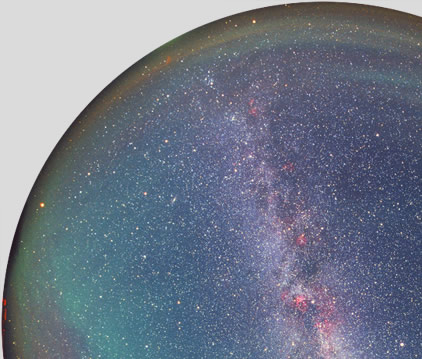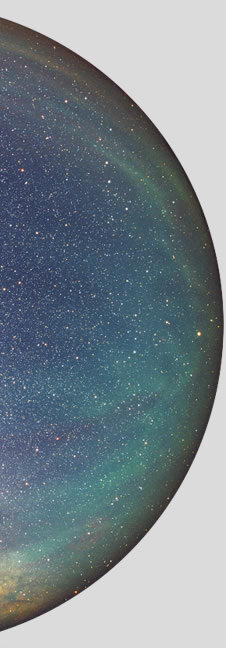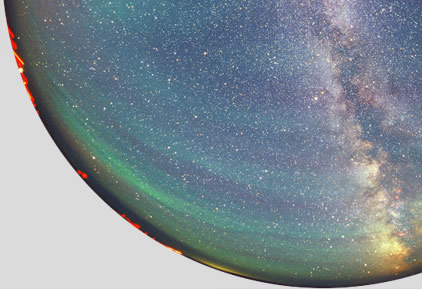
OPOD
What's New
Rays & Shadows
Water Droplets
Rainbows
Ice Halos
High Atmosphere
Nacreous Clouds
Noctilucent Clouds
Rocket Trails
Airglow
About
More Images
Aurora
Zodiacal Light
Links & Resources
Search - Index
123456789012345678
| Airglow |
Airglow An all sky image taken by Doug Zubenel just after local midnight in Cherry County, Nebraska North is at top, Mars is rising at 10 o'clock and ruddy Arcturus is low in the west at 3 o'clock. Far away from light pollution, the Milky Way blazes across the sky. Elsewhere, soft green bands stretch from east to west. This is light emission from Earth's upper atmosphere - the airglow. Earth’s nightside sky is never completely dark. Long after sunset and even with no interference from artificial lights, moonlight or aurorae the sky has a soft glow. To see it needs long dark adaptation. Eventually, when stars are almost blinding and the Milky Way is a bright convolved mass, the sky itself will be seen to be luminous and a hand held towards the heavens will be a black silhouette. Unlike the aurora, the airglow is visible all over the globe. Though brightest 10-15 degrees above the horizon it fills the sky. It is strongly coloured yet it is without colour to our unaided eyes because its light is below their threshold of colour perception. From orbit it is a green bubble enclosing the world. Look carefully and banded or uneven structure changing slowly over minutes might be visible. The bands can appear to cross the sky and converge towards two opposite points on the horizon in the same way that crepuscular and anticrepuscular rays do. The reason is the same, the glowing bands are parallel and perspective effects makes them appear to converge. |


